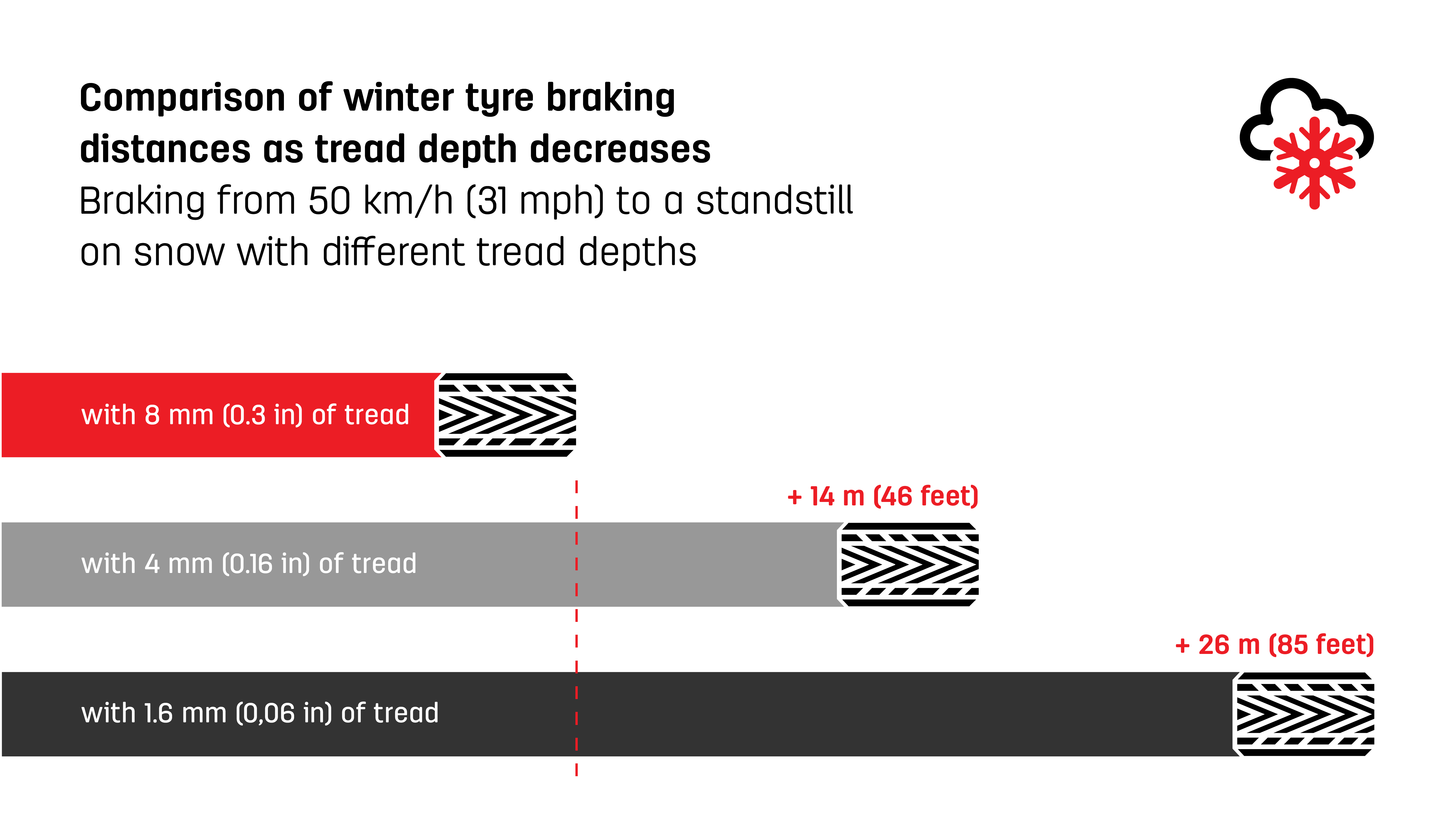Winter tyres legislation in Europe
Read more
Snow is great fun. Snowball fights, snowmen, sledging – it brings out the child in all of us. As adults, however, it does present some challenges, particularly when it comes to driving.
But, if you know how to drive in snow, many of these can be minimised. There are things you can do before you set out, as well as precautions you can take once you’re on the road. Knowing how to drive in snow will not only keep you safe but it will help you enjoy the drive.
For more information, read our article What to do if you’re stuck in snow.
 *Test conditions: 205/55 R16 91H , ContiWinterContactTM TS 830, VW Golf V, braking on snow, from 50km/h to 0 km/h (status: 2013). The graphics shown here are for illustration purposes only. The braking distance of a vehicle depends on its type, its age, the brakes and the tyres used, as well as the road surface (Source: Continental Reifen Deutschland GmbH). Tyre pressure in relation to the vehicle manufacturer's recommendation (Source: Continental Reifen Deutschland GmbH).
*Test conditions: 205/55 R16 91H , ContiWinterContactTM TS 830, VW Golf V, braking on snow, from 50km/h to 0 km/h (status: 2013). The graphics shown here are for illustration purposes only. The braking distance of a vehicle depends on its type, its age, the brakes and the tyres used, as well as the road surface (Source: Continental Reifen Deutschland GmbH). Tyre pressure in relation to the vehicle manufacturer's recommendation (Source: Continental Reifen Deutschland GmbH).


